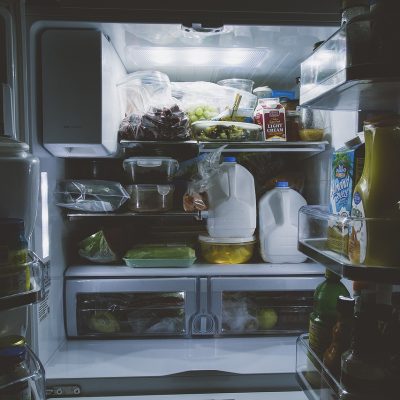This autumn, there have been several headlines in the media about inflation, namely the steep increase in the cost of certain foods. Due to the fact that the price of goods has gone up by 13 percent over the course of the previous year, a trip to the supermarket that cost $100 in September 2021 would now cost $113 in September 2022. Although it may not seem like much money, thirteen dollars can make a significant difference in a nation like the United States, where 13.5 million families had trouble putting food on the table last year. How exactly does inflation affect the struggling middle class?
Cost of Living Rises
As everything becomes more expensive, families are forced to make tough choices. It’s not only about the cost of food.
Over the course of the previous year, there was a 6% rise in the cost of housing, while there was a staggering 19.8% increase in the cost of energy.
Families Make Tough Choices
When a family wants to stay afloat, the food budget is often the first to go. The costs shouldn’t be avoided, but families often cut back on this budget to stay afloat. More than half of the people who use food pantries report having to choose between paying their rent or utility bills and paying for food.
Low-Income Regions In the USA
The additional difficulty comes from the expense of using various modes of transportation. Over 53 million people, which is more than the population of Texas and Florida combined, live in low-income areas with limited access to food. In these areas, getting to the nearest full-service grocery store requires travel by car or public transportation. This number of people is more than the population of Texas and Florida combined. As the cost of transportation has increased substantially this year, a trip to the grocery store has become more expensive.
Health Care Impacts
Families may choose to purchase less nutritious food as a cost-cutting measure, which may negatively impact their health over the long run and make it even more difficult to keep up with the growing expense of medical care.
Inflation as a whole compels a greater number of families to make choices that are increasingly more challenging. Because of the availability of support in the form of the Supplemental Nutritional Assistance Program (SNAP, formerly known as food stamps), or a local food pantry, which helps families put food on the table, the household’s food bill is frequently the last to be paid – this is because, in contrast to other services, assistance is available.
Keep reading to find out if that’s not the case.
Why Does SNAP Generally Respond Slowly To Inflation?
More than 41 million Americans, about equal to the populations of New York State, Georgia, and Michigan combined, get assistance from the Supplemental Nutrition Assistance Program (SNAP) every month in order to put food on their tables. The Supplemental Nutrition Assistance Program (SNAP) provides financial assistance to millions of families across the United States. These families typically include adult caregivers who are looking after children or elderly relatives.
Role Of SNAP
SNAP also plays an important role in the economies of both urban and rural areas. Additional financial incentives may be made available through other programs funded by the USDA to encourage participants of the Supplemental Nutrition Assistance Program (SNAP) to shop at farmer’s markets for locally grown produce. This makes it possible for participants’ SNAP benefits to go even further while assisting the region’s agricultural community. In spite of this help, families in the past have stated that SNAP was inadequate, and as a result, many families are forced to depend on food banks and pantries as an extra safety net.
Thrifty Food Plan 2021
The USDA took historically significant action in 2021 to alter the Thrifty Food Plan, which serves as the foundation for Supplemental Nutrition Assistance Program (SNAP) benefits. As a consequence of this change, the monthly benefits increased by an average of $36. Despite the significance of this increase, the Supplemental Nutrition Assistance Program does not account for rapid inflation such as that which we have seen this year. Despite the fact that the price of the Thrifty Food Plan is revised every month to account for variations in the cost of food, SNAP payments are only revised once per year.
- Beginning October 1, SNAP benefits are calculated based on June Thrifty Food Plan expenses.
- This implies that SNAP payments for the period beginning October 1, 2022, and ending October 1, 2023, will be calculated based on the cost of food in June 2022.
- Despite the fact that the cost of food has already climbed by 2.8% in the three months since June 2022 and is expected to continue growing. This indicates that households spend less money each month purchasing food because of rising food costs.
In addition, despite Congress and the USDA implementing additional emergency SNAP benefits during the height of the COVID-19 pandemic, at least 16 states have chosen not to participate in the program over the past few months, which has resulted in SNAP users suffering an additional blow.
Prices Rise: Food Banks And Pantries Struggle
In 2021, more than 53 million individuals in the United States visited one of the 60,000 available food pantries. However, it seems the mile-long queues that began in 2020 have not shrunk much even as the epidemic is declining. More than eighty percent of the polled food pantries showed a consistent or growing demand.
Regrettably, food banks are not immune to the external economic pressures that are exerted on them. Inflation is also impacting contributors, resulting in lower contributions to food banks. With the money they receive, they can purchase less food as food prices, distribution costs, storage costs, and other operating expenses continue to rise.
Despite the fact that the administrations of Biden and Harris have offered emergency aid in the form of increased cash this year, food banks will still need continuous help in order to resolve the crisis. Unless they get extra assistance, the families that visit food banks in order to augment the amount of money they spend on food each week will not be able to put food on their tables.
What Options Do We Have?
During the continuing COVID-19 pandemic, which has undermined food and nutritional food security in the United States, inflation has risen and continues to rise. This contributed to a decline in food and nutritional food security. For the Supplemental Nutrition Assistance Program (SNAP) and emergency food networks to be able to properly address this inflation and meet the needs of families who are food insecure on a day-to-day basis, the government will have to provide support.
Nutrition Security Issue
In order to effectively address the issue of nutrition security, we need food systems that are both sustainable and equitable. This requires taking action to address some of the fundamental factors that contribute to food insecurity, such as inequality and injustice. Centuries of systemic racism and violence have cut people of color off from affordable and accessible healthy food.
The rate of food and nutrition insecurity in the general population was 10% in 2021. However, it reached 16% in Hispanic communities, and in African American communities, it reached 20%. This equates to one out of every five households.
Despite the fact that underemployment and unemployment are both associated with food insecurity, a significant number of families that are food insecure include people who are employed full-time. It is ironic that employees in the food industry, such as farm laborers, retail and service workers, and others who are largely people of color, receive some of the lowest salaries in our nation while food businesses see their profits grow.
Price Increase Record
It is quite improbable that the situation will get better in the absence of a restructuring of the food system that involves stricter regulation of monopolies. Early this year, Tyson announced profits that were a record thanks to price increases that were higher than inflation.
Another developing story is the planned merger between Kroger and Albertsons, which will impact small stores and reduce the number of food options available in many towns. One research found that mergers led to a price rise of between 3 and 7 percent in the marketplace.
Conclusion
Due to the fact that it encompasses every facet of our food and agricultural system, the Farm Bill, which is due to be reauthorized in 2023, represents our greatest opportunity to address the interconnected causes of food and nutrition insecurity. Increasing investments in nutrition and anti-hunger programs make it possible to expand access to nutrient-dense foods. At the same time, addressing the underlying causes of food and nutrition insecurity is possible by advocating for racial justice for farmers and farm workers and fair competition in the food industry.
Feature image: Pixabay
Also read:





